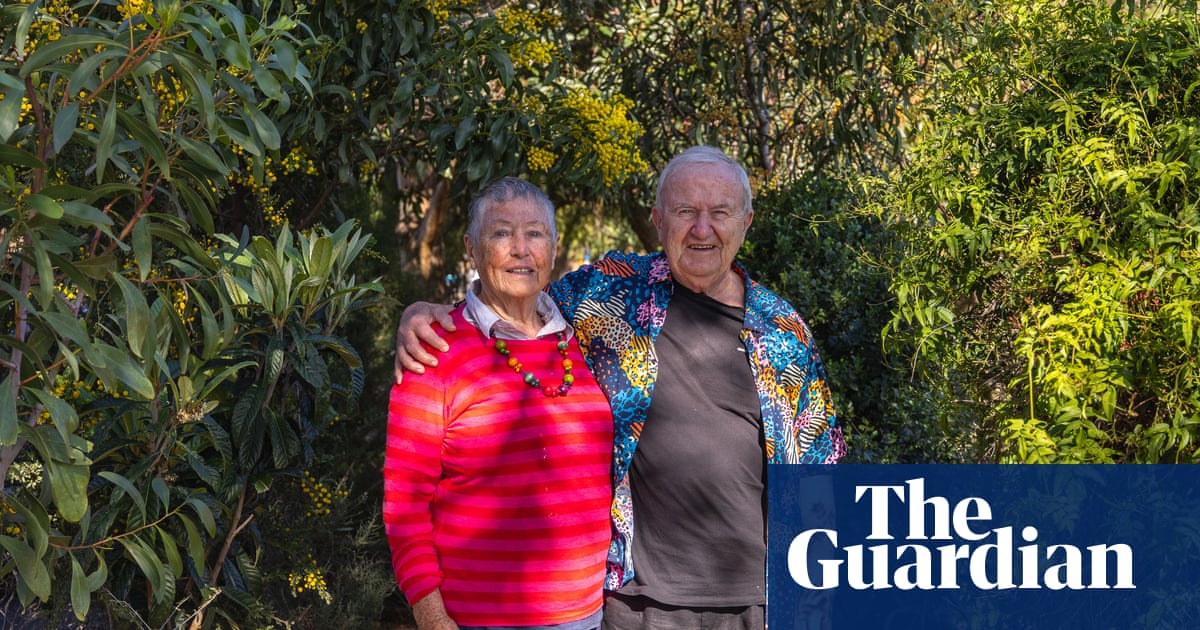AThe moment John Boland moved into his inner-city Adelaide home, he removed concrete and sheds and planted fruit trees. In the thirty years since, those trees have provided him with a third of his food and cooled his house so well that he doesn’t need air conditioning.
Deciduous trees on the west side of the house provide shade to the house during the hot South Australian summer and allow in the afternoon sun during the winter. They also keep out hot breezes in the summer and cold winds in the winter.
“We’re practically living in the jungle,” says Boland. “We sit and listen to the birds singing instead of the noise of the air conditioning, and enjoy a meal in a beautiful bush setting in the middle of the city.”
Boland, a 76-year-old professor of environmental mathematics, lives with his wife Chris Bryant on a traditional half-acre plot in Felixstow, four miles from the town centre. The couple have long had a keen interest in sustainability and began making the house more efficient and comfortable shortly after moving in 28 years ago.
“We try to do the simple things first and see if they work,” says Boland. “We know a lot of the principles – I know the climate side and Chris knows the food production side – and we can put the two together and just see how it goes.”
Rather than tearing down their 1940s-era frame house and starting over, Boland and Bryant found opportunities to improve sustainability as they arose. A simple example: When they had to take apart their walls to remove asbestos or repair termite damage, they made sure to install insulation as part of the repairs.
Boland, who wrote his doctoral thesis on heat flow in houses, has gradually redesigned the house to maximize ventilation. He installed wire mesh safety screens so he can leave doors and windows open. He had the interior wall between the living room and pantry torn out so that evening breezes can flow throughout the house.
“In the summer, we go for walks in the evenings, leaving the doors open but locking the security doors… all we hear from the other neighbors is their air conditioners running,” he says. “They haven’t been paying attention to what the weather is like and have tried to capitalize on it, but we do.”
The couple decided on solar panels back in March 2000, but maintained their gradual approach, opting for a smaller system to see if they could reduce their energy use. “Until we need it, we’re not doing it,” Boland says. “It’s that kind of idea of trying something minimal first.”
They stuck with the smaller system and managed to use less energy than they generated, but took advantage of an expanded government grant in 2021 to add more panels and a battery. They drink rainwater and drain wastewater from their washing machine into the garden, which is home to birds, blue-tongued iguanas and four different species of frog.
From season to season, their suburban orchard produces apples and pears, macadamia nuts and pecans, peaches and pomegranates, native limes and quandongs, lemons and mandarins and much more, all packed tightly and thriving in Adelaide’s fertile soil. By planning their meals around their garden’s seasonal produce and composting as much waste as possible, the couple have reduced their contribution to landfill. They only put their household rubbish bin out for collection by the council once a month, rather than once a week.
The reduced environmental impact also extends to transportation. When Boland needs to go shopping, he walks or takes the bus. He has been without a car for over a decade. “We had a car accident about 13 years ago and never got around to buying a new one,” he says.
While Boland’s efforts weren’t always smooth sailing – from planting trees that weren’t suited to the climate to installing windows that were impractically large – he says the mistakes he made along the way only helped him improve subsequent redesigns.
“I’m also a mathematician, so I’m interested in optimization, and we’re trying to optimize our entire life system,” he says. “To be honest, it’s just incredibly fun and satisfying.”
In addition to his teaching, Boland now also gives public talks in which he encourages Australians to make their homes more comfortable using simple methods. Common tips include putting plants on balconies, opening windows to air out the air in summer and avoiding draughts caused by leaky doors and windows in winter.
“See, that’s what it’s all about,” he says. “A lot of what we do is fundamentally about more comfort, not just about energy savings.”
“You can have fun and try things to see how far you can get.”

